By Rick VanSickle
Flat Rock Cellars winemaker David Sheppard has been working harvests in Niagara since 1982. He has seen all that Mother Nature can throw at him.
But nothing like what happened in 2018.
“This past vintage was one of the crazier ones that I’ve ever seen. It was the first time that I have ever finished picking Riesling before Pinot Noir and Chardonnay,” said the veteran winemaker.
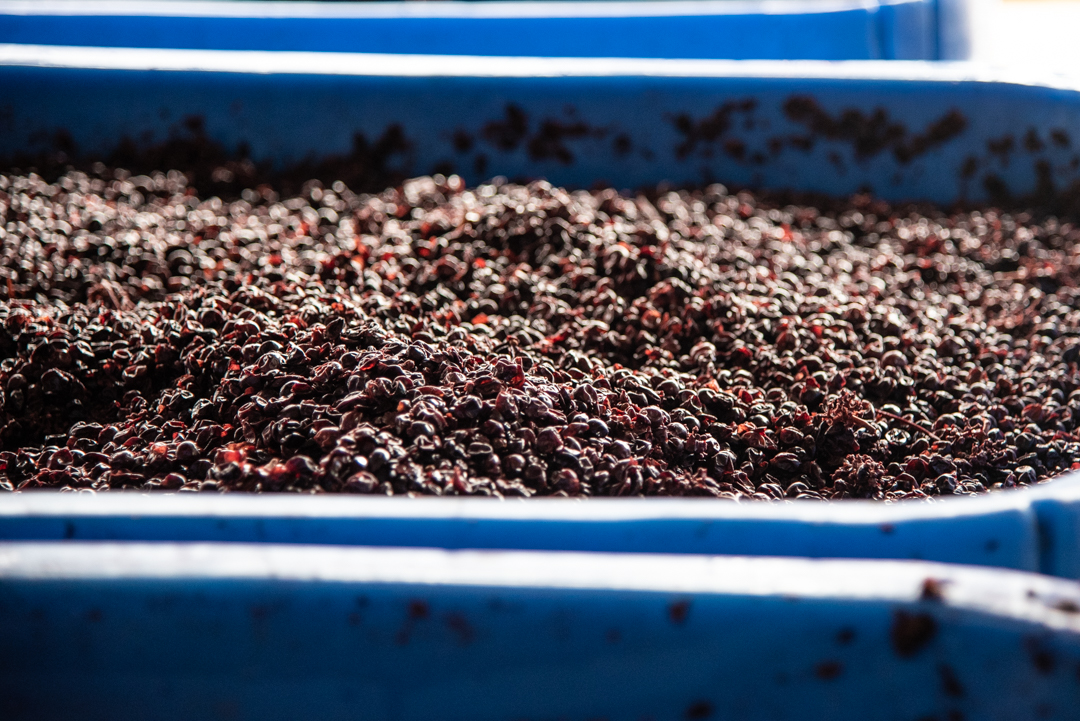
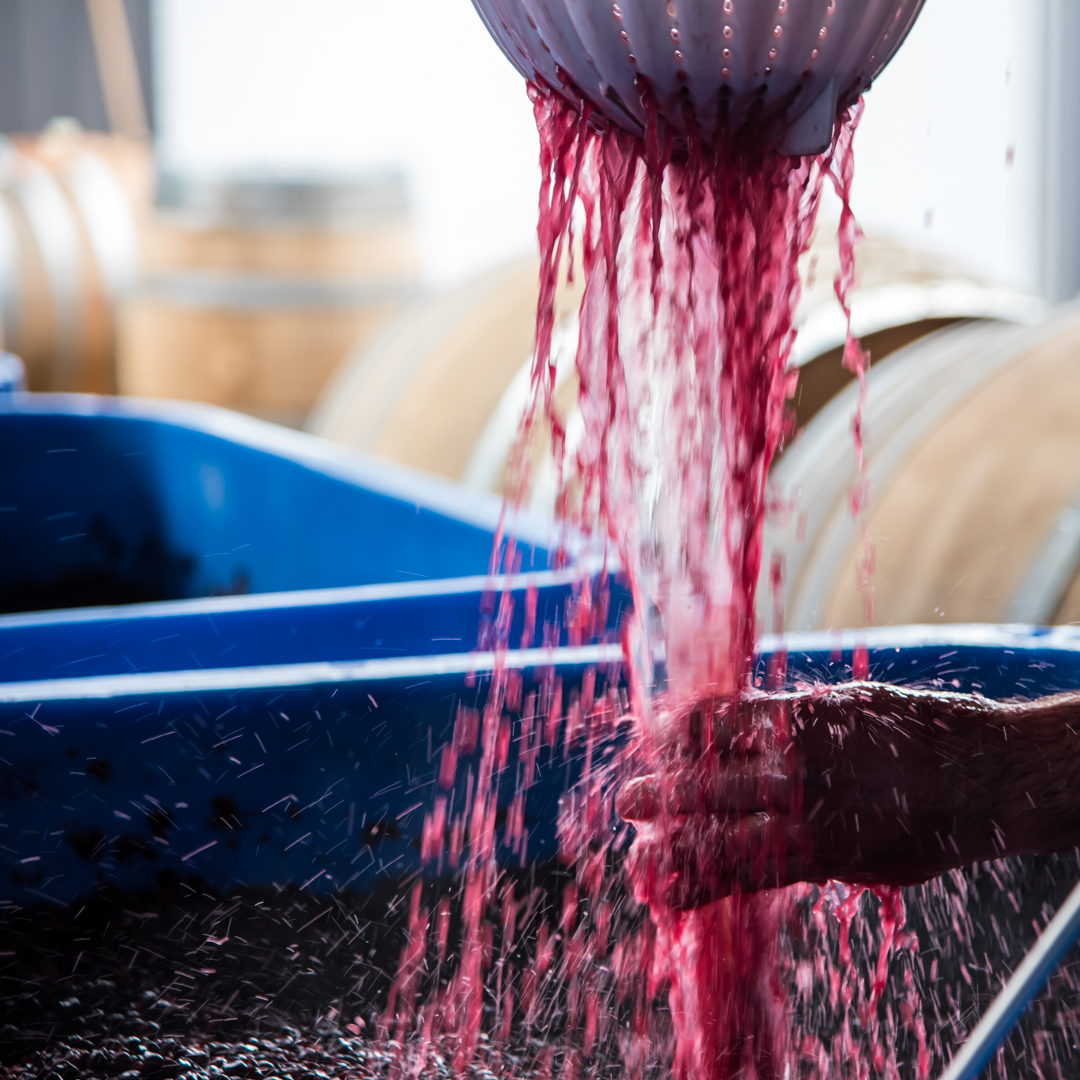
Another seasoned winemaker, Rob Power, agrees with Sheppard, but is thankful it all worked out in the end.
“I think 2018 will go down in the books as one of the most difficult vintages ever in terms of weather calamities. But I don’t think that all that Sturm und Drang impacted quality – the wines are all quite good in a moderate climate idiom,” said the Creekside and Queenston Mile winemaker.
No doubt, it was a wild one.
Looking back on the summer season, it was one of the hottest on record in Ontario with very little rain and was on a path to being one of those worry-free vintages that favours a wide spectrum of grapes, especially the Bordeaux varieties that only reach the ripeness required for top wines in those warm vintages such as 2016, 2012 and 2010.
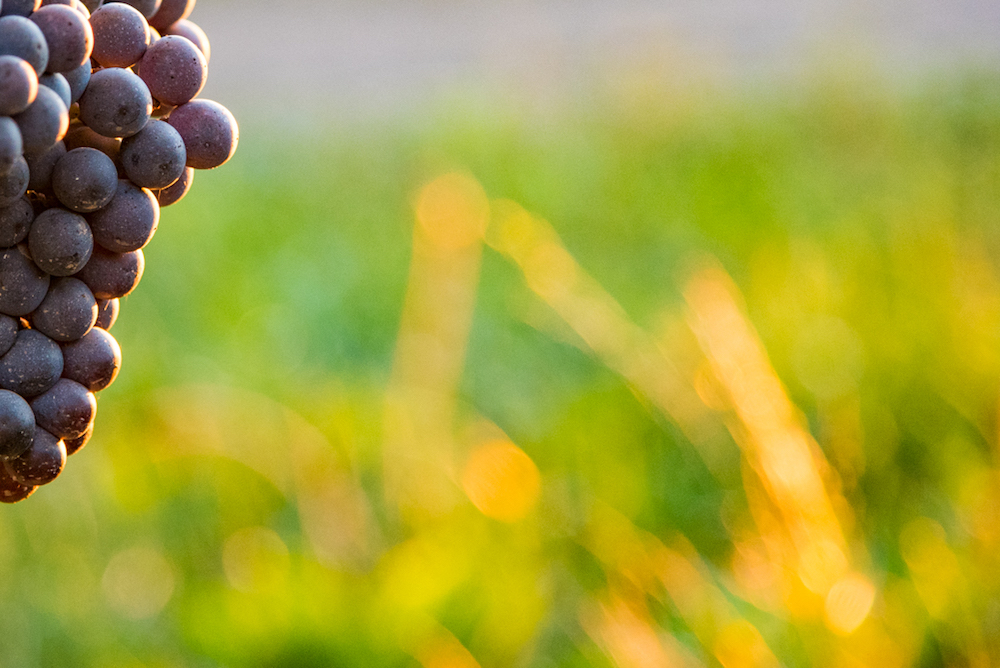
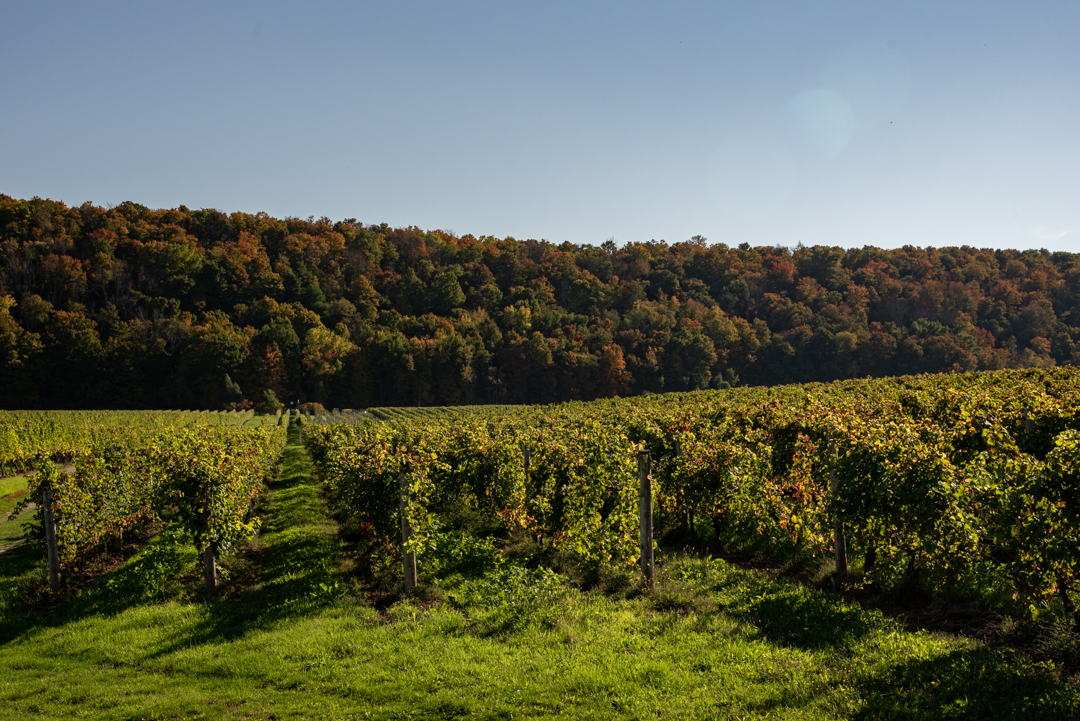
The warm and sunny growing season resulted in quick ripening which allowed an early and speedy harvest for some varieties while mid-harvest rains brought panic for the rest of the way.
The challenge was rain, rain and then more rain and the challenges posed by leaving grapes hanging with the risk of disease pressures resulting from humid conditions. Quick decisions on what to harvest had to be made, in some cases making an agonizing choice between saving one variety over another.
Said Vineland Estate Brian Schmidt: “2018 was a year that challenged even the most resilient among us. Don’t let anyone tell you differently.”
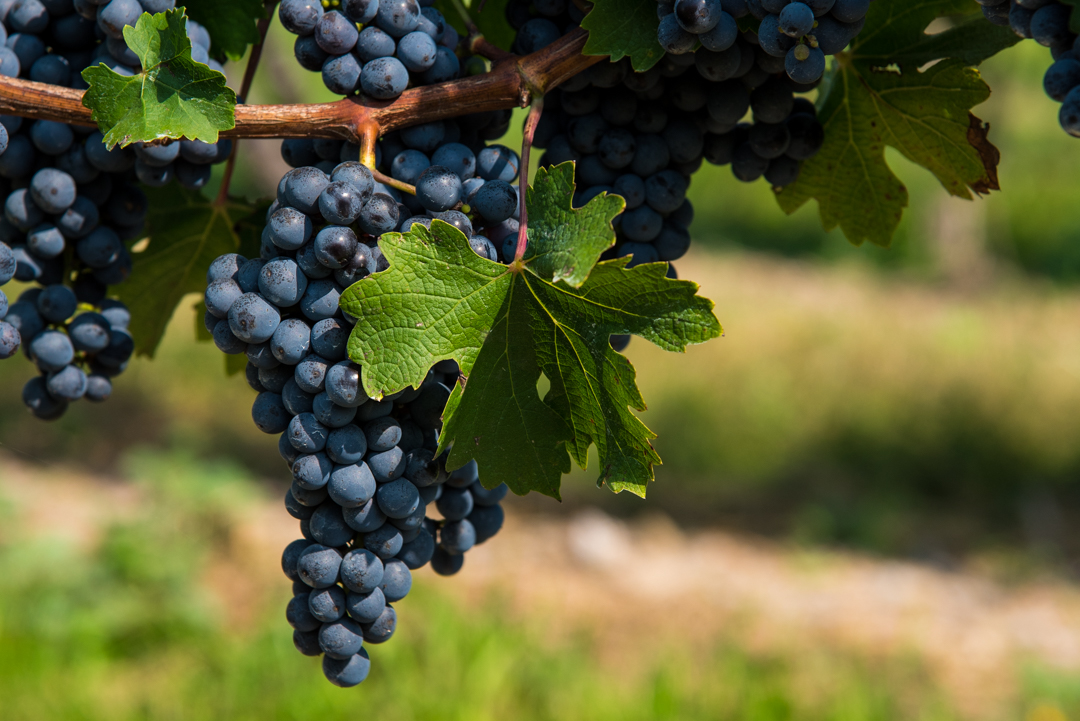
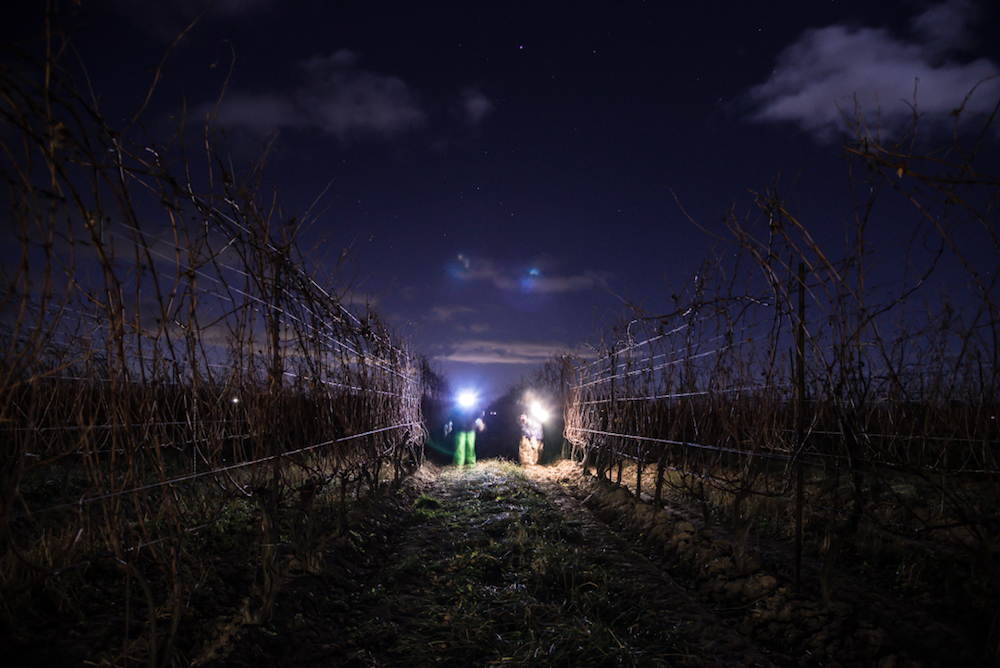
It was a harvest that tested the skills of growers and winemakers who worked day and night to bring in grapes in between the wet episodes and had to make quick decisions in the vineyard.
“The resulting wines are too early to assess but appear (largely due to lower brix) to, despite the heat and stress that led to rot, show a marked purity and cool-climate character,” said winemaker and owner Thomas Bachelder. “It will be a fun one to watch.”
There is optimism about the harvest, at least for the grapes and resulting wines that made it to the crush pad in good shape.
VQA reported this in its annual vintage assessment: “Precision agriculture, teamwork and expertise ensured grapes were harvested in peak condition. Grape quantity is expected to be typical overall, with some reduction in yields specific to longer ripening varieties. The overall quality of the fruit is good in all regions.”
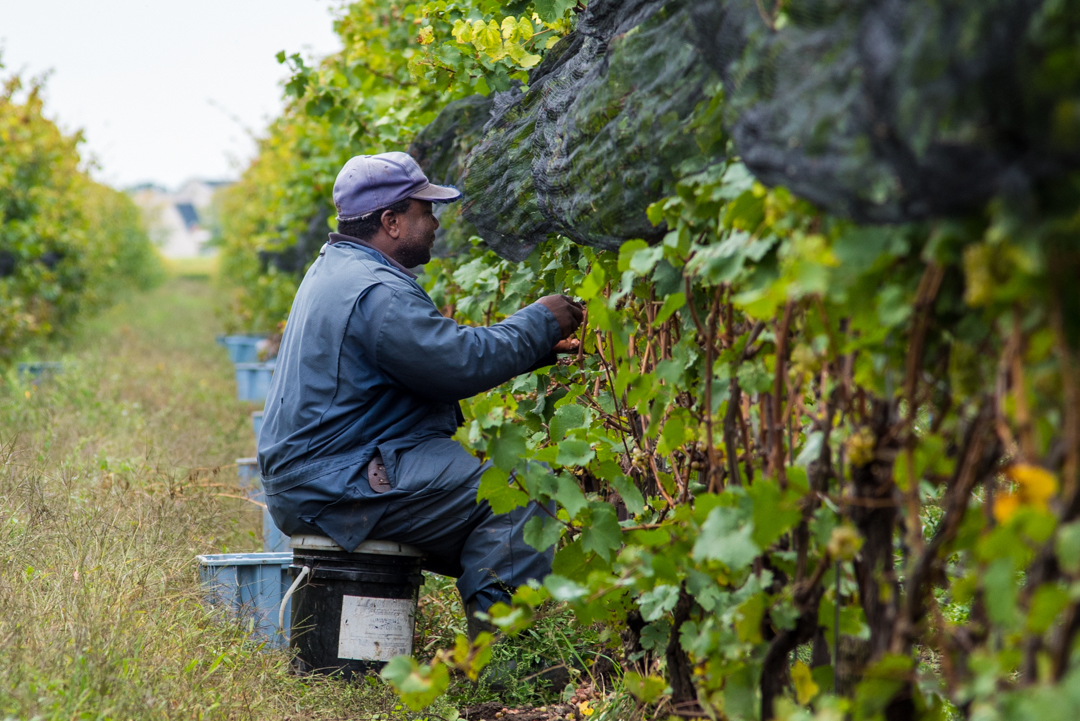
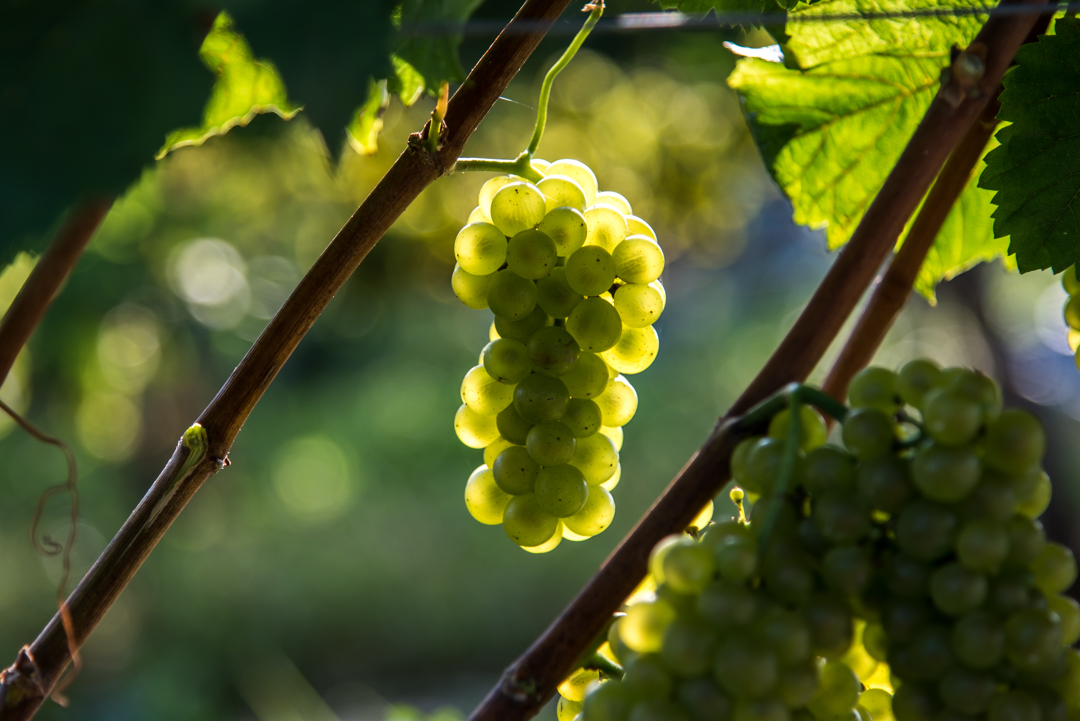
I think it will come down to a vintage that will vary from winery to winery and the calculated decisions they made during the harvest to avoid rot, excessive water and Brix decisions that were often dictated by the wet weather.
Said Shauna White, winemaker at Hockley Valley winery Adamo: “Although we had many battles with extreme weather throughout the growing season, 2018 was another successful vintage.”
Wines in Niagara offers in this complete vintage report, including: VQA’s assessment, observations from dozens of Ontario winemakers on the harvest and updated Ontario vintage charts back to 1998.
Note: Wines In Niagara thanks the winemakers and growers for their comments about the vintage. Without them, this report would lack the expertise it needs to be credible.
Note 2: Also, a big thank you to Niagara photographer extraordinaire Elena Galey-Pride for her compelling shots of the harvest in Niagara. Her thoughtful photos are identified in the cutlines.
VQA’s 2018 Vintage Report
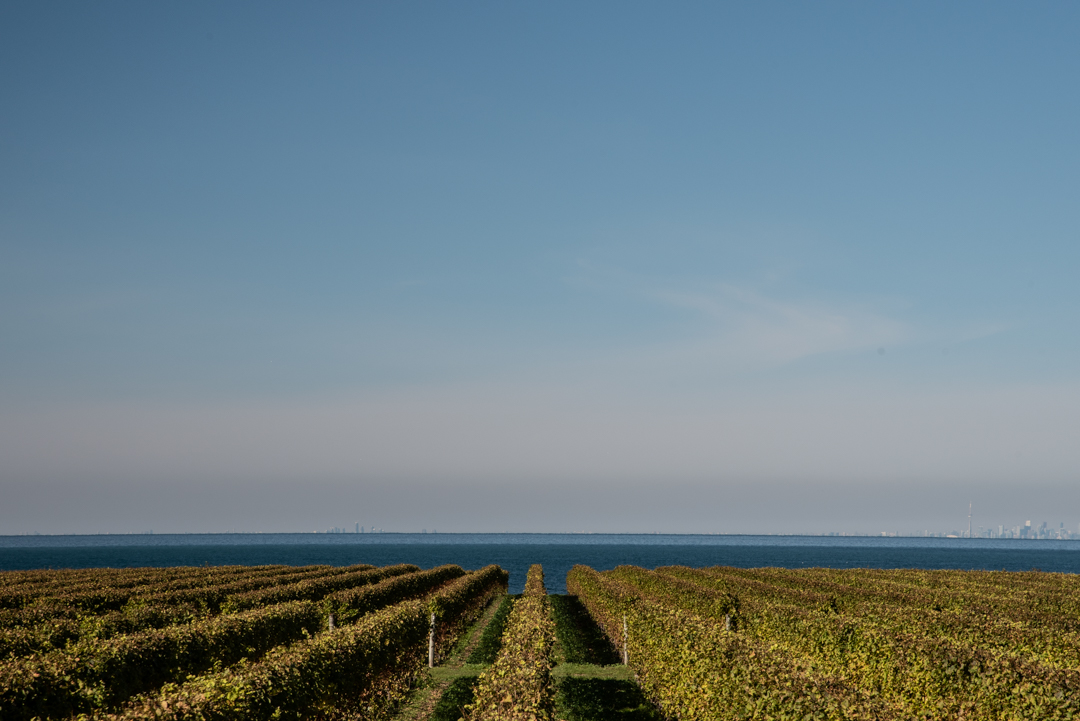
Conditions
Weather conditions for Ontario wine regions in 2018 were extremely variable through all four seasons. The year started off with cold temperatures and precipitation in January. This was followed by warm weather and a quick thaw in February that caused flooding in some of our Emerging Wine Regions.
March was comparatively warm and dry and gave the impression that spring had arrived early. Sadly, winter reappeared in April, bringing cold weather, snow and ice. Spring finally arrived for good in May and the weather was warm and windy across Ontario.
The warm trend continued through the summer with some extreme heat through June and July and heat waves at the end of August generating thunderstorms with heavy precipitation across all regions. Heading into harvest, the weather stayed warm through most of September and into October, but winegrowers had to cope with precipitation and humidity throughout harvest. November was cool and dry, and cold temperatures came early, dipping below -8 C on Nov. 22, which allowed for an early start to the Icewine harvest.
Harvest
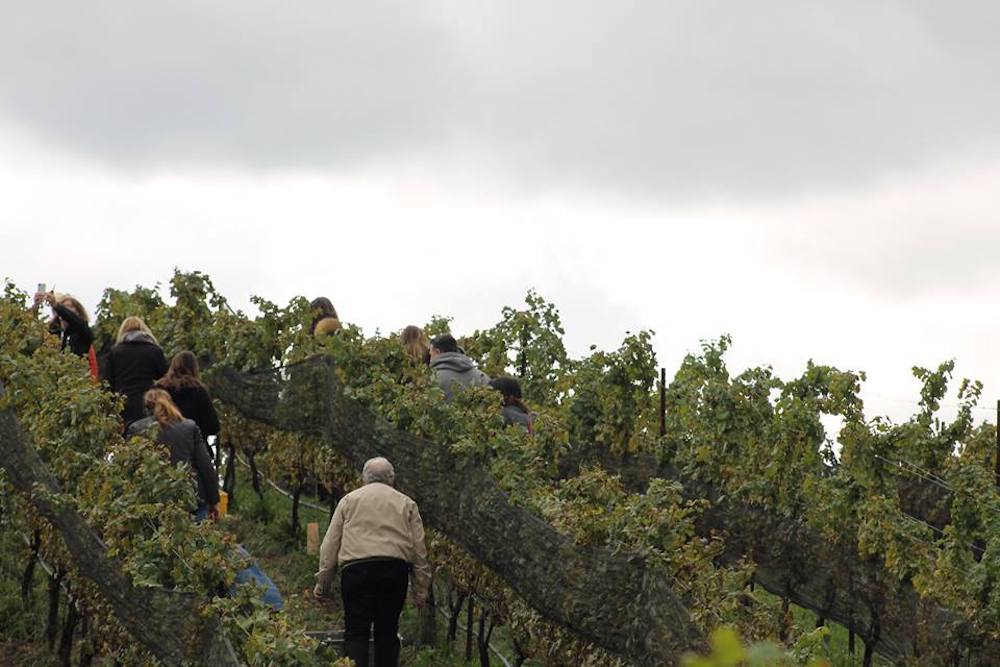
The warm and sunny growing season resulted in early ripening which allowed an early and speedy harvest. This was ideal given the challenges posed by the mid-harvest rain and the desire to avoid the risk of disease pressures resulting from humid conditions. Precision agriculture, teamwork and expertise ensured grapes were harvested in peak condition. Grape quantity is expected to be typical overall, with some reduction in yields specific to longer ripening varieties. The overall quality of the fruit is good in all regions.
Preliminary registrations for Icewine and late harvest grapes show an estimated 3,775 tonnes, slightly lower than average due to decisions made to harvest early. The Icewine harvest officially began on Nov. 22.
Wine Expectations
A reduction in yield for 2018 can be attributed to two main factors: long dry spells which resulted in small berry size at veraison; and the necessary dropping of fruit, particularly for those varieties that started to breakdown prematurely, due to humidity, at a time when the grapes had already softened. This was the case for Riesling and Pinot Gris, and to some extent, Chardonnay. However, above average heat paired with a dry summer allowed a good level of ripeness and concentration to develop in remaining 2018 fruit. Outlook for wines from this vintage is positive.
Vignettes from the vintage from
winemakers and growers
in all regions of Ontario
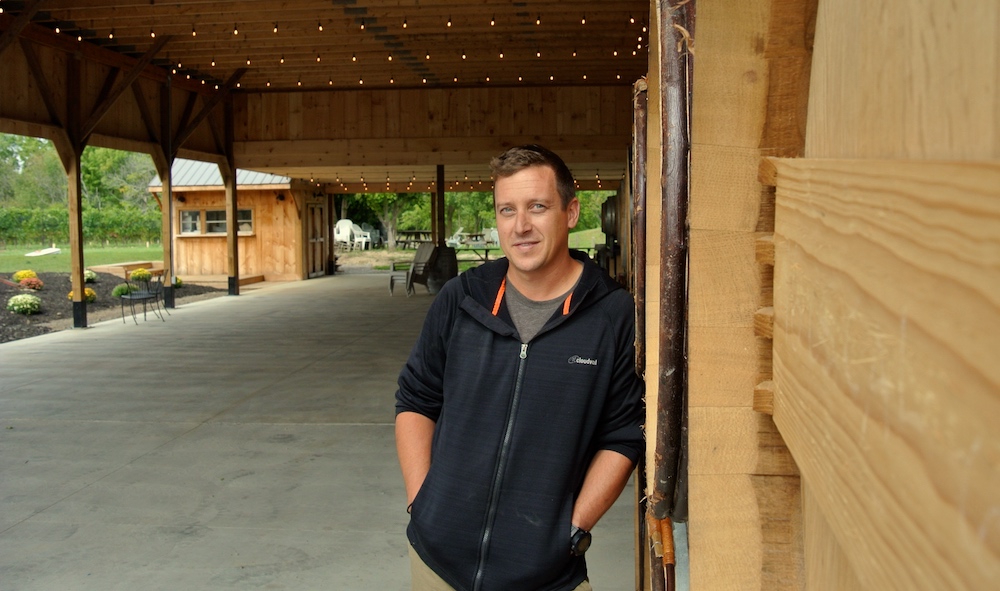
Kevin Panagapka, winemaker/owner
at 2027 Cellars, winemaker at
Calamus, Twenty Mile Bench
“A volatile vintage … extremely warm nights in September contributed to sour rot breakdown (especially in Riesling). The 2018 Vintage, although difficult for the early ripening varieties, will yield some high quality Bordeaux reds and Chardonnay.
“Cabernet Franc did well in the 2018 vintage, fully ripe and tannic, expect longer aging potential for the 2018 Bordeaux reds. Aromatic whites (if picked earlier) seem to have come through the vintage quite well as far as quality (although, picking time was crucial).”
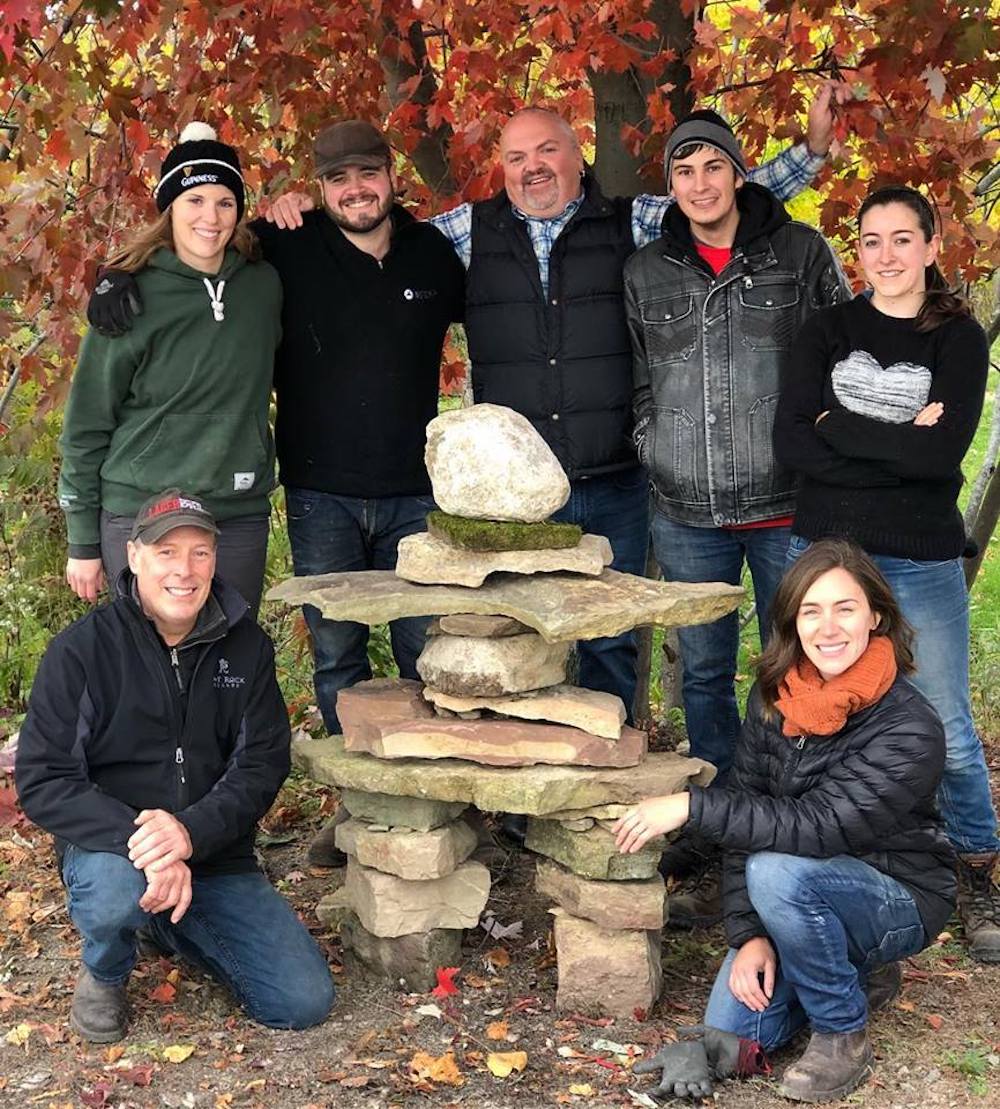
David Sheppard, winemaker Flat Rock Cellars,
Twenty Mile Bench
“This past vintage was one of the crazier ones that I’ve ever seen. It was the first time (going back to my first Ont. vintage of 1982) that I have ever finished picking Riesling before Pinot Noir and Chardonnay.
“This year it was out of pure necessity, as the Riesling seemed to really start to suffer with the heat, humidity and rains that came at a time when they were softening and sweetening up. They clearly were not going to last long on the vines this year.
“I was very happy to not have to worry about hanging Riesling for Icewine … actually delighted to not have to worry about hanging anything for Icewine.
“It was a good year for Pinot Noir as the warm, dry summer accelerated the maturation process to the point where we were able to start picking great quality fruit earlier than normal, which, as it turned out, was in advance of the crappy weather that followed.
“Another bonus in 2018 was the lack of MALB (multi-coloured Asian Lady Beetle) pressure in the vineyards. We typically have enough to worry about without ladybug infestations.
“For whatever reason, the acids seemed to hold up nicely for many varieties even with some elevated sugar levels. This type of circumstance is always welcome.
“On the down side, the dry summer made for a lighter crop load as bunch weights were down. For the later ripening varieties the shorter crop was further exacerbated by the necessity to drop rotting fruit on the ground as bunches started to break down under the rainy, warm and humid conditions.”
Barclay Robinson, Foreign Affair,
Twenty Mile Bench
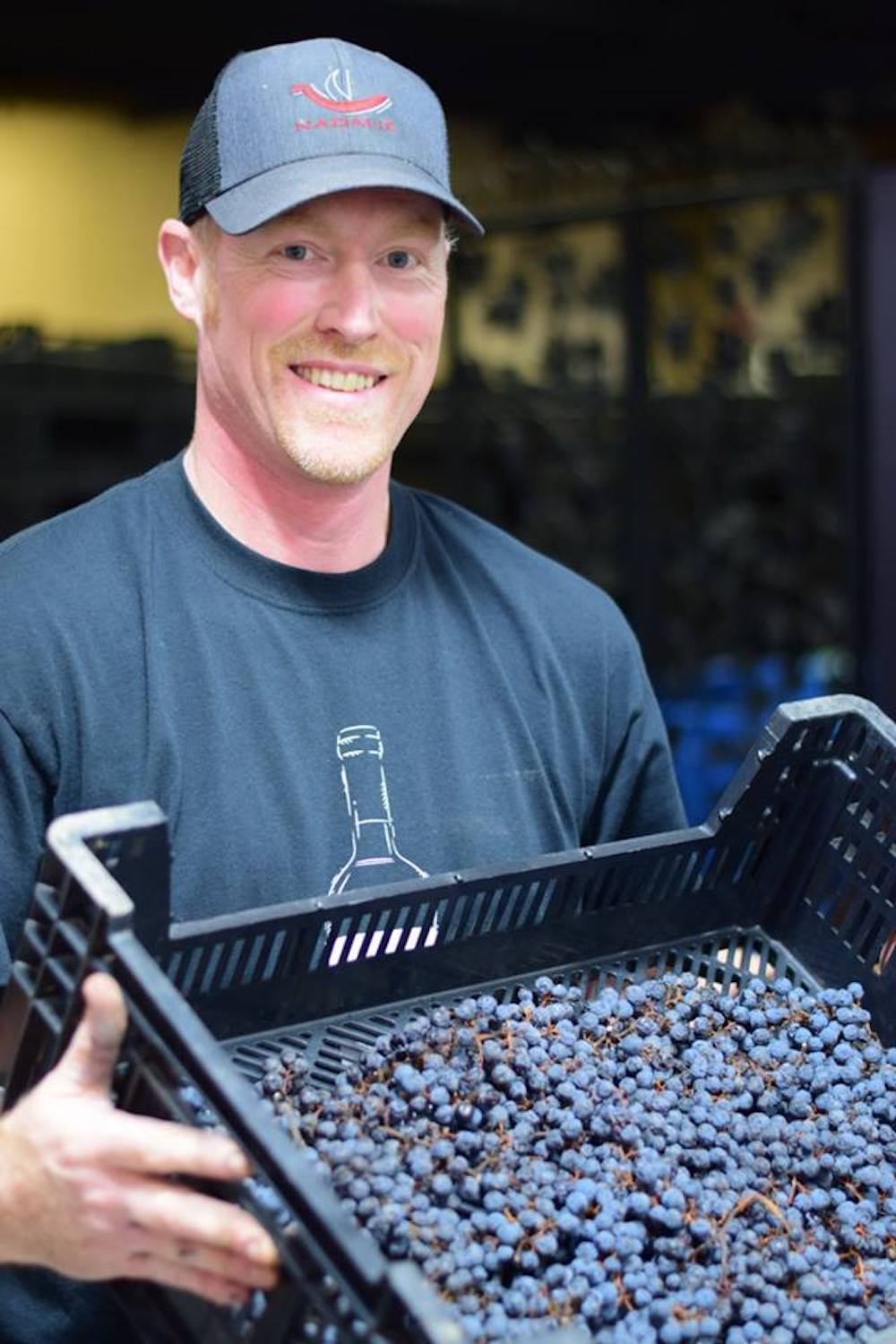
“This vintage had multiple challenges and blessings. First, we did have a cold snap last New Year’s Eve (2018) that did cause some bud damage especially to sensitive varietals (big yield losses in Sauv Blanc, Petit Verdot, and Merlot for us).
“(With) other varieties, yields were down as the VQA report suggested due to lower cluster weights and dropped fruit nearing harvest due to breakdown of the skins (thin skinned varieties).
“Humidity, heat, and rain all played havoc with our harvest timing, but the fruit that came in had exceptionally ripe flavours.
“Early varieties were harvested keeping acidity as well as ripeness/Brix in mind to achieve balanced wines. Bordeaux reds (depending on your vineyard regime) were very healthy, ripe and balanced. Quality of the red wines I am finding to be above average, as the early ripening and heat of the summer helped our Bordeaux red varieties especially.
“There were some isolated issues in the region with color stability on reds that had to be harvested earlier than desired due to disease pressure (due to these grapes not achieving full phenolic ripeness). Overall I feel the 2018 vintage produced great ripe wines but with a reduced yield.”
Brian Schmidt, winemaker
Vineland Estate, Twenty Mile Bench
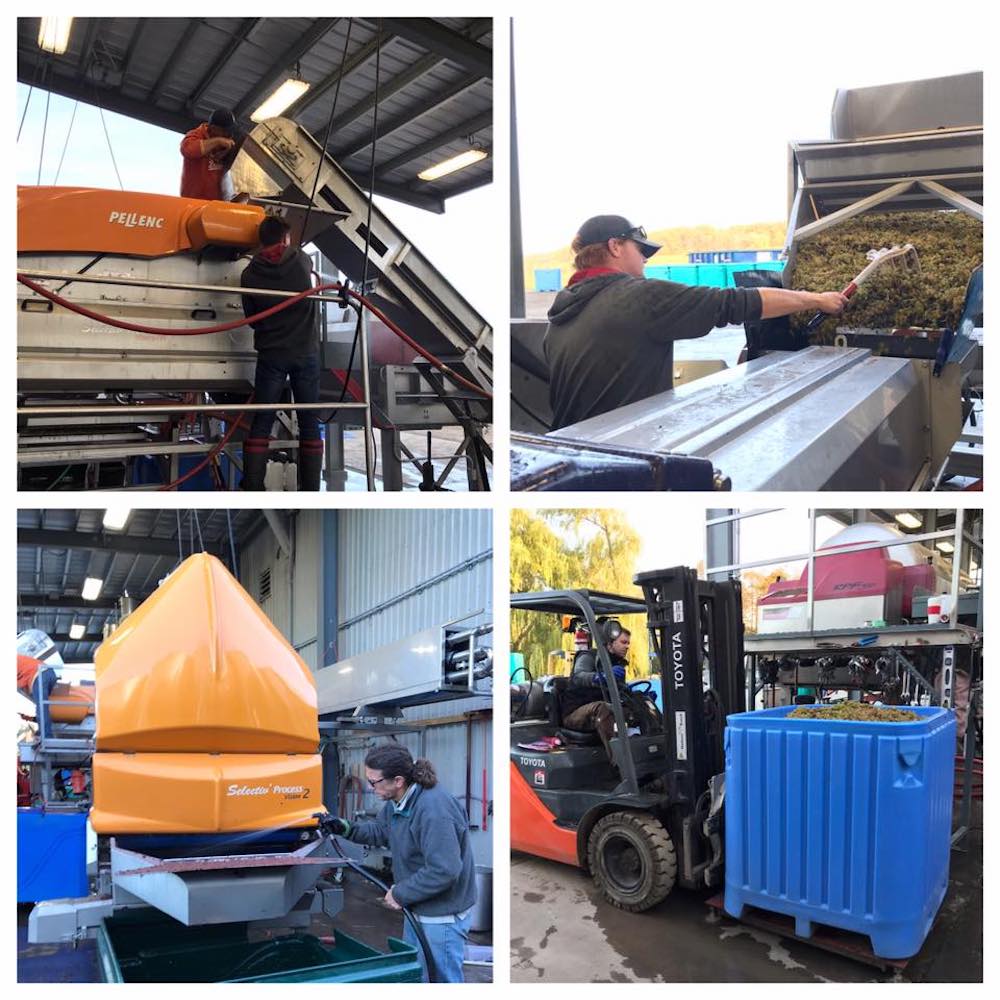
“In 2003 a quote was pinned to the wall in the lab at Three Sisters Winery in Dalonega, Georgia. Some version of this is often recited by winemakers to describe every vintage:
“Nature threw us a few curve balls early in the growing season, and we experienced a few hic-ups in summer, and we were on pins and needles, but in the end Mother Nature brought the vines into balance and the fruit ripened evenly. It was so, so very wonderful and beautiful and the quality looks so great, and we’re, very, very, very optimistic.”
“A second quote is often used to describe farmers:
“A farmer has to be an optimist or he wouldn’t still be a farmer.” — Will Rogers
“2018 was a year that challenged even the most resilient among us. Don’t let anyone tell you differently!! The summer was HOT and really stressed the vines. The crop size was down, way down. The rain in September almost ruined everything … then October came, oh how we needed October to be amazing. And … it was so, so, very wonderful and beautiful, and the quality looks so great, and we’re, very, very, very optimistic.”
Jay Johnston, winemaker
Hidden Bench, Beamsville Bench
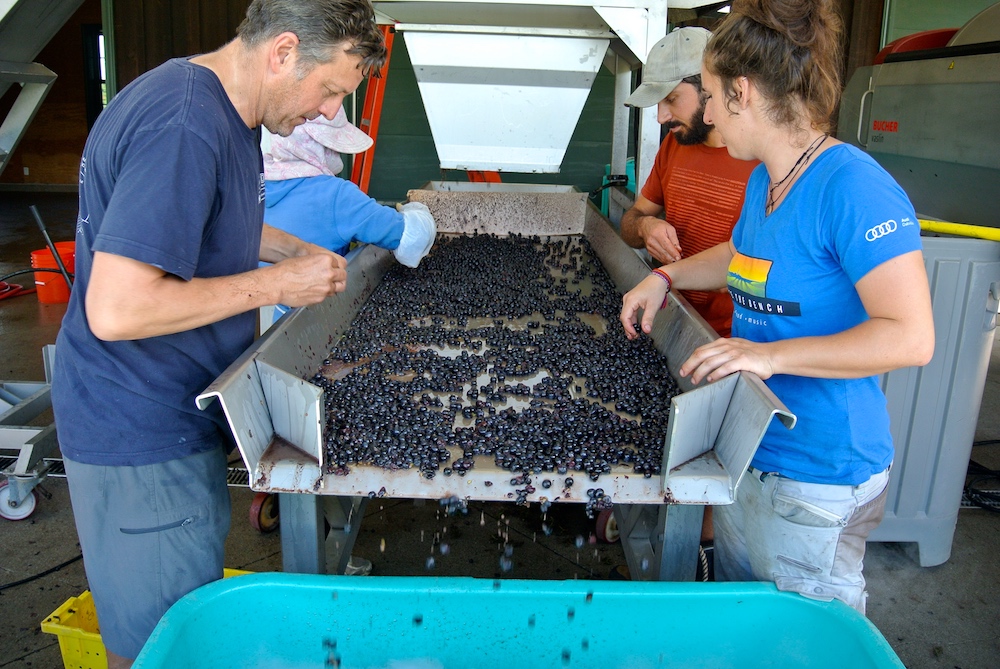
“The early impacts on the 2018 season occurred Nov. 22, 2017, when late-season cold temperatures dropped to -8.1 C. This impacted the vines’ ability to acclimate for winter.
“As New Year’s Eve approached, temperatures dropped down to -20 C and the vines were affected, likely having nascent buds damaged – reducing the crop size for 2018.
“The rest of the winter was fairly uneventful and April was typically cool and wet. May temperatures were slightly higher than average and the vines came out of dormancy for spring.
“Bud break started May 10 with Pinot Noir and Chardonnay and lasted 7 days. After “bud break” we were able to see the potential winter damage and would have to adjust our viticulture accordingly.
“Flowering typically occurs during Summer Solstice and 2018 was no different. Berry formation was good across all varietals, although younger blocks of Chardonnay showed uneven “berry set.”
“July and August are noted for extreme heat and very dry conditions with averages just below 30 C. Older vines managed the difficulties, however, younger blocks suffered. Lack of moisture in the ground and the debilitating heat meant the berries were very small, immediately reducing our potential crop by 30%.
“Late August rains gave the vines the boost they needed to properly mature the fruit. While less sugar accumulation than 2017, the 2018 vintage is noted by concentration.
“A smaller crop meant we were able to harvest each block at prime time. The weather co-operated as we started picking for sparkling wine on Sept. 7 and then finished with Cabernet Franc & Merlot on Oct. 19. An early season!”
David Stasiuk, winemaker
Rockway Vineyards,
Twenty Mile Bench
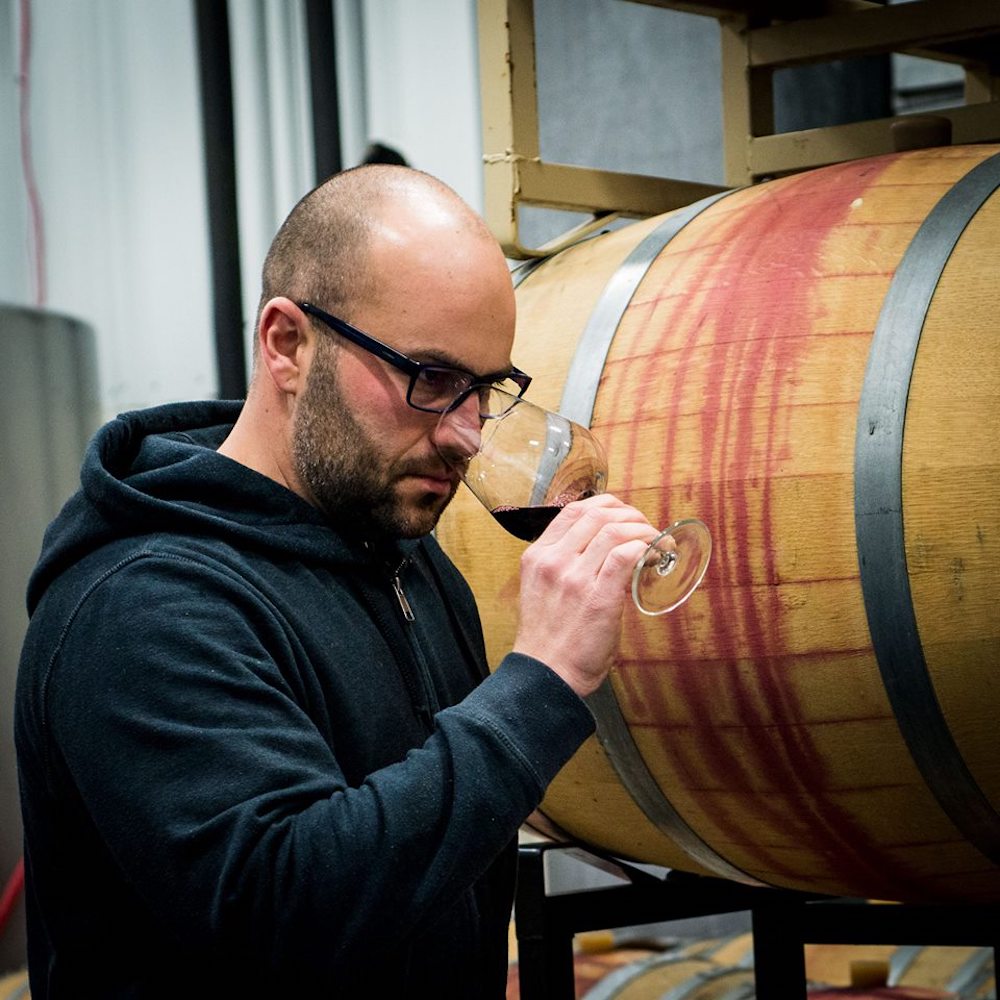
“Although we had a late start to the growing season, the summer brought on warm and dry weather that helped the grapes immensely. Unfortunately, as ripening accelerated, so did rain and extremely high humidity.
“Many of our growers faced fungal pressures in ways they had not seen coming. 2018 proved to be a year requiring precision viticulture mixed with a bit of luck.
“Many vineyards were compromised by botryris and other forms of breakdown. Some grower fruit proved to be challenging to work with and required some quick thinking under the winemaker’s hat.
“Over all our estate fruit was clean and achieved phenolic ripeness. We are seeing very positive outcomes for the vintage thus far. Pinot and Chard are standing out with Syrah, Cab Franc and Riesling also showing promise.”
Thomas Bachelder and
Craig Wismer, various terroirs
on Twenty Mile and Beamsville Bench
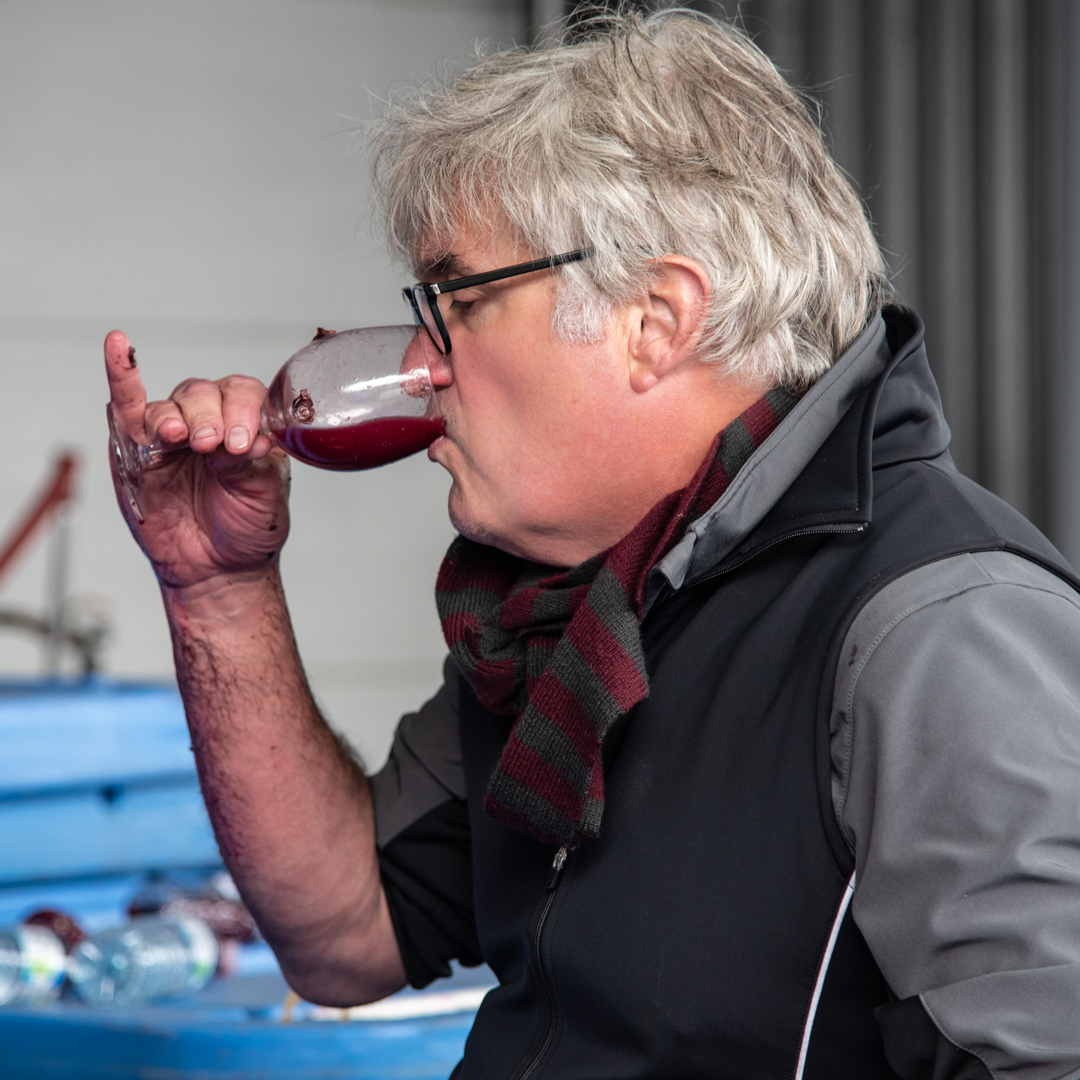
“I have thought about this a lot. What can I say that is a little different and informative?
“I was just sitting down for lunch with Craig Wismer. We sipped on Niagara Chardonnay and then Gamay and then more Chardonnay as we mused and riffed.
“I intersperse Craig’s thoughts here with more of my own. I am going to uncharacteristically do this in point form ….
“After a dry disease-less summer, how could the finish require us to resort so much to the sorting table?
“Craig says: “It’s like a switch flipped, and the extreme heat of the summer produced a stress that weakened the skins and induced breakdown.”
“And what about the swings of temperature during fermentation? I have such distinct memories of fermenting Pinot Gris that came in off the vines on a scorching 39 C; same with some Pinot Noir – yet I fermented another Bench site of Pinot Noir a full three weeks later where it was 20 C outside and harder to get a wild ferment going.
“For Chardonnay we were obsessed with getting Wismer Foxcroft in before it got cooked (and, happily, it did NOT). Happily, the older vines sailed through the heat … and yet waited 12 days later for Wismer Wingfield vineyard Chardonnay, which is only 800m further south and came in no higher in brix!!!
“Craig says: “In short, it was so hot that things stalled – the vines went into preservation mode and nothing got overripe!”
“Craig: “Careful viticulture and attention to detail in the vines paid off in more consistent fruit and less rot.”
“As for later grapes like the Cab Franc, we thought they might come in earlier after a warm summer – but they didn’t — there was the weather change, things got cooler, and we had to wait nearly as long as in a cooler year for the late varieties.
“In Summation: my feeling is that the wines have a precision that we didn’t see in the equally hot 2016 vintage.
“The resulting wines are too early to assess but appear (largely due to lower brix) to, despite the heat and stress that led to rot, show a marked purity and cool-climate character.
“It will be a fun one to watch.”
Ben Minaker, winemaker
Ravine Vineyard,
St. David’s Bench
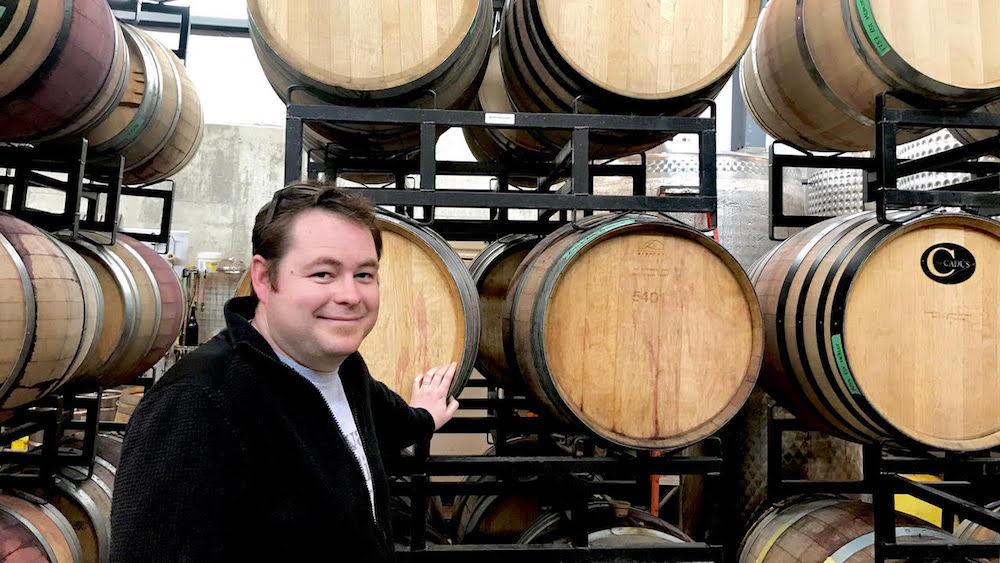
“The growing season was relatively good in Niagara. It was warm if maybe a little too hot at times. It was dry, but right as we were about to fire up our irrigation lines, we got some rain (unfortunately on the Sunday morning brunch of I4C).
“Fall was all right and harvest was looking very early. Part way through September though it started to rain. The rain continued on and off until the first of November. We were able to find days to get grapes picked and the odd day of sunshine provided some nice relief.
“I found that quantities were down, first because 2017 was a very plentiful year and we know that Mother Nature likes balance. Secondly because harvest conditions were a bit wet and humid so dropping diseased fruit was necessary. I also found that the fruit that made it into the winery was very good and that we are now seeing some good flavour and aroma expression already.”
Rob DiDomenico, winemaker
Reif Estate, Niagara-on-the-Lake
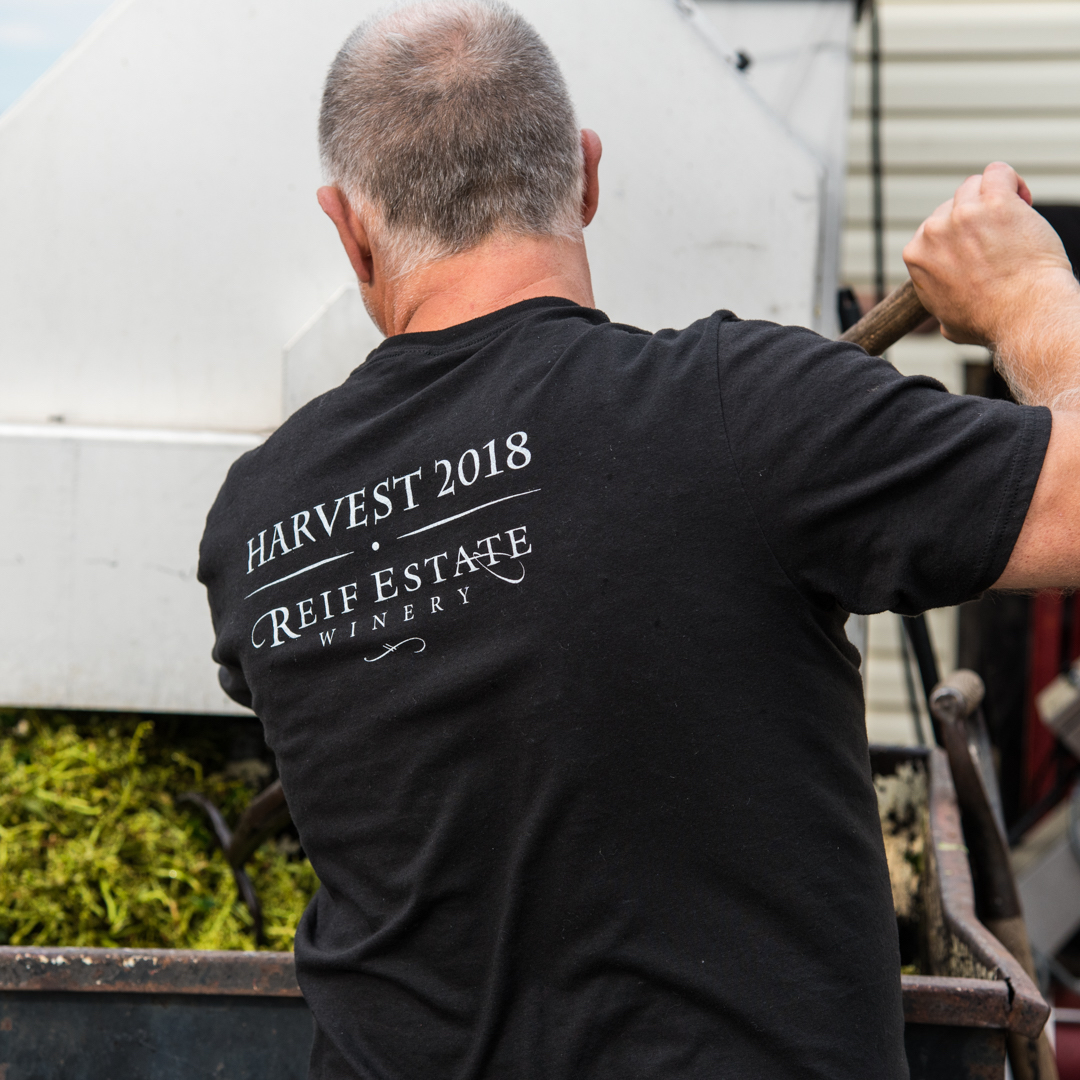
“I believe it has been one of the most challenging vintages. The slow cool start affected fruit set and in turn lowered yields across the board. The hot summer was great to bring about ripeness, but the intense and relentless humidity put the vines under a lot of disease pressure.
“Plenty of fruit had to be dropped early due to break down especially in Rieslings and Pinot Gris. The harvest showed us lots of wet conditions, which made picking at optimum levels tricky. The resulting fruit was clean and ripe and produced well balanced flavorful wines. Some showing uncharacteristic profiles from previous vintages but nonetheless charming.”
Arterra Wines Canada
(Jackson-Triggs, Inniskillin,
Niagara-on-the-Lake)
Climate & Crop Development 2018
“Growing season started late due to below normal temperatures in April – but as soon as it warmed up in May, our vines grew quickly and flowering was early.
“Summer was the hottest on record in Niagara (with 45 days above 30 C!) and grapes responded well in this ideal weather.”
Harvest 2018
“Harvest began 10 days ahead of average in 2018, but just prior to harvest the region experienced less than ideal conditions – high heat, high humidity, evening dew, morning dew, fog and rain. Over 10 inches of rain fell during harvest.
“Luckily, there were enough dry days between the rain to successfully harvest and we were able to pick our thin-skinned varieties such as Chardonnay, Gewurztraminer, Pinot Gris, Pinot Noir and Riesling quickly and early without compromising quality.”
Rob Power, winemaker
at Creekside and Queenston Mile,
Jordan and St. David’s Bench

“I think 2018 will go down in the books as one of the most difficult vintages ever in terms of weather calamities. But I don’t think that all that Sturm und Drang impacted quality – the wines are all quite good in a moderate climate idiom.
“As you note, the sh**storm of weather impacted quantity for sure as we had to drop more rot than normal.
“We call 2018 the doughnut vintage. Hard and fast start as we fought to get early varieties in after the heat wave and downpours. Then nothing much to pick for a while until the reds came in on normal-to-late timelines.
“Re: reduction in yield: everything you say there is true, but it is also likely that we were light right from the start of the season. 2017 was heavy, and the pendulum always swings the other way in the next vintage,
“Aromatic whites were picked in a panic as they were breaking down in the heat wave. This could have been disastrous but the wines are actually wonderful. We’re especially lucky with Sauv Blanc – we usually pick on flavour, but had to pick regardless of flavour development to get clean fruit. Looks like the flavours were there anyways – lucky timing.
“Grigio and Sauv Blanc will be old school lower alcohol in the low-mid 11s. Never a bad thing!
Likewise for the reds — lower alcohol than i.e. rockin’ 16 and 17s. But the flavours are ripe, so more of an elegant year in the best sense of the word. Great Syrah and definitely Old World Syrah style as opposed to “Shiraz”.
Gary Killops, wine writer,
Lake Erie North Shore
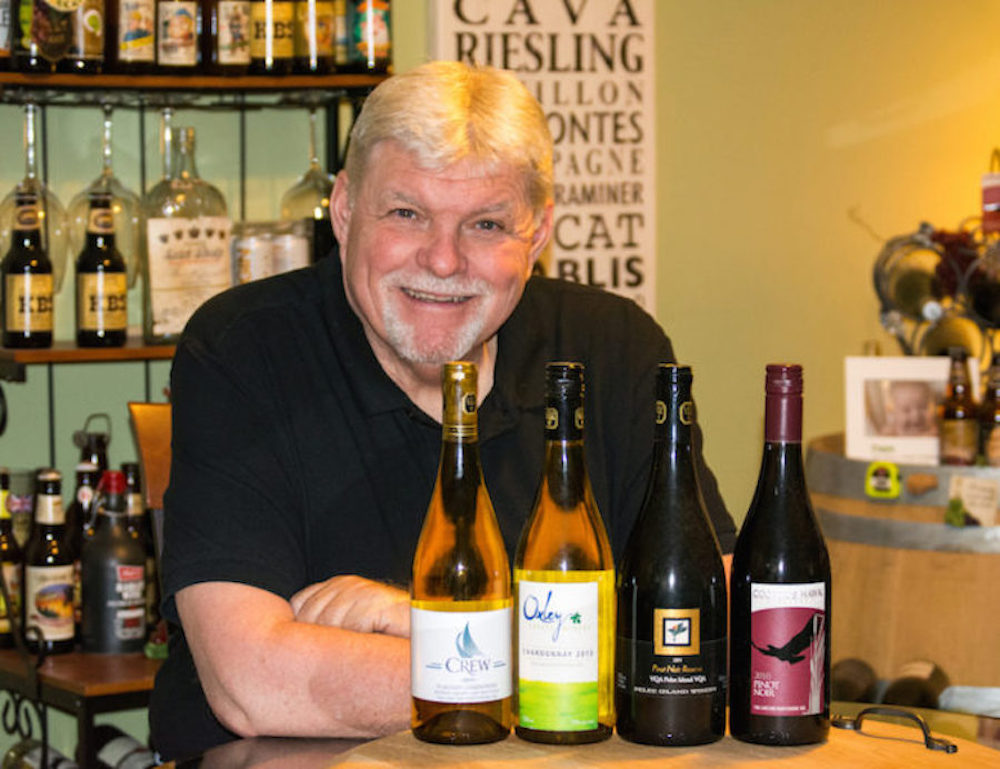
“I reached out to Scott Wilkins. He is a grape grower in Amherstburg and plans to open Dancing Swallows Vineyard Lake Erie North Shore’s newest winery this summer.
“Scott comments on the 2018 vintage in Lake Erie North Shore.
“The year started late with no significant heat until May. Despite the late start, summer heat resulted in ~1,700 growing degree days by the middle of October.
“Disease pressure was higher than average through the summer. This was followed by heavy rain and extreme heat leading up to Thanksgiving, increasing the disease pressure. As a result, the crop was smaller than typical in the thin-skinned varietals, although the fruit that was harvested was quite good.
“The October heat was followed by cooler weather, which delayed ripening on the later varieties, like Cabernet Franc and Cabernet Sauvignon. Eventually these varieties ripened these up nicely, although some harvesting occurred toward the end of November.
Mackenzie Brisbois,
Trail Estate winemaker,
Prince Edward County
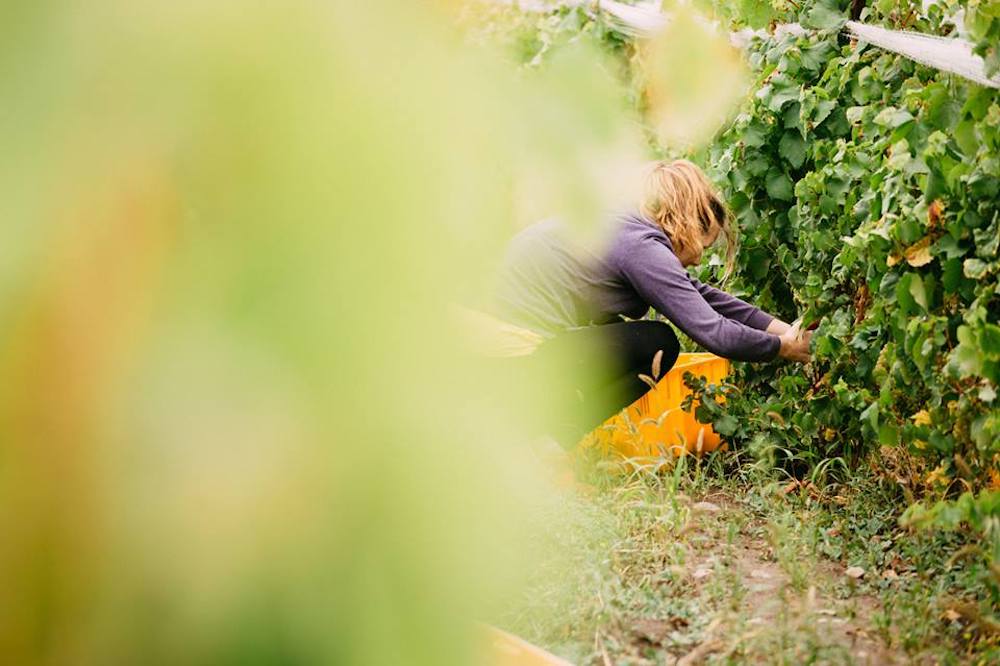
“Much as the VQA report states, the season was hot and fruit seemed to be ready to harvest overnight, with everything being ready at the same time. Much of our Pinot Noir and Chardonnay was harvested in Prince Edward County at the same time as the fruit in Niagara.
“Thin-skinned varieties that were left to hang began breaking down quickly as conditions were hot and there was a significant rain event. In our cellar I rushed to pick varieties as early and quickly as possible. Anything that needed more hang time was sorted in field and again at the winery.
“Overall, wines appear to show good flavour and balance. In my cellar, I’m happiest with the County Chardonnay (I picked relatively early and the fruit was beautifully ripe with good acid) and the Foxcroft (Niagara) Cabernet Franc (the hot summer created great concentration and a powerful amount of tannin).”
Shauna White, winemaker
at Adamo in the Hockley Valley
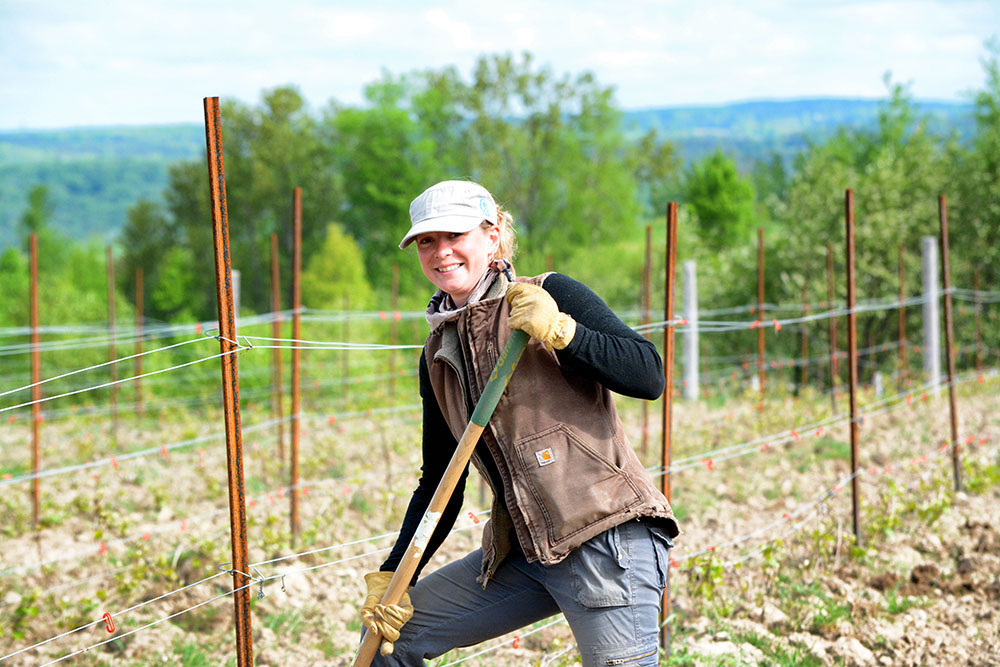
“April brought us cold temperatures early on along with snow and an ice storm on the 14th and 15th. In the third week of April we started to see warmer temperatures and finally nights above 0 C. When May arrived, so did summer or so it seemed … the heat during the second week invigorated bud break.
“Warm temperatures at day and night stimulated the vines to an active start for the growing season, but it was too dry for their requirements. “A warm rain on May 15 helped, and boy did we need it, but this was a one-time event and the drought continued into June.
“The next rain came on June 17 and we got only 1.5 mL. What happened to our spring showers that the vines need during the early start to their growing season? We had to take the emergency measure to hand water plants and replants throughout June to ensure vine health and growth.
“Finally, by the third week of June we received the rain we needed in May and earlier in the month, all at once, 38 mL in 1 day! The warm temperatures turned hot along with high levels of humidity. Heat warnings and temperatures of 35 + C were feeling like 47 C from June 30-July 2. This was followed by a storm dropping 110 mL on July 5-6. Temperatures stayed hot during the day and warm at nights with humidity holding between 40%-85% and with a total of 171 mL of rain in the month of July. This trend continued into August with another 135 mL falling that month with most of the accumulation before the 20.
“The humidity remained high, not dropping lower than 50%, even during the nights. Cool nights and little rain started on the 30 of August and this continued through September with only 2 days of rain the entire month.
“Cool temperatures at night was also a blessing with lows between 5-10 C and warm days in the mid 20s until the end of the month. What this means for us was that we battled high disease pressure all summer with a successful integrated spray program.
“Once September came, we were able to let things hang until optimal ripeness and held onto our acidity with the cool nights. These nights were beneficial because our disease pressure lowered and we were able to harvest clean, balanced and tasty fruit! Although we had many battles with extreme weather throughout the growing season, 2018 was another successful vintage.”
The Ontario Wine Vintage
Charts going back to 1998
We have been publishing this vintage chart for Ontario wine for the past 10 years on this website. It was originally commissioned by the now defunct Wine Access magazine and updated on an annual basis. We have tried to keep it current and relevant.
New to the chart is a “tentative” rating for 2018, a more informed rating for the 2017 vintage and updates on all the other vintages (mainly in the drinking window) back to 1998.
As with any rating system, the score is less important than the description of the vintage. That is especially true when discussing a region such as Ontario where so many varieties of grapes are grown. What’s good for the Bordeaux varieties isn’t necessarily good for aromatic whites and tender red grapes in any given vintage. It is rare that, in terms of wine quality, a year is a total failure or a total success in Ontario, unlike vintages in say, Burgundy or Bordeaux. Please keep that in mind when reading our assessments.
2018 ★★★★★★★½ (7½ out of 10, tentative)
This is an extremely difficult vintage to assess without tasting any of the wines. It was an ideal summer; hot, dry and long, sunny days. Everything was ahead on the ripening front and it appeared to be another 2016 or 2012. But heavy rain and thundershowers mid-harvest turned the vintage on its ear and left many growers and winemakers with tough decisions to make in the vineyard (not to mention dog tired). In some cases it was a choice between saving one variety over another. The quality of the wines, once they get to bottle, will entirely depend on what decisions were made — not only in the vineyard but also in the winery. Most wines made with grapes harvested before the rains began will be exceptional. Those wines made with grapes harvested after the rains began will have to be assessed once they start arriving in retail stores. Winemakers feel the wines they have in tank and barrels are of good quality. We will taste over the next year and have a better feel for the vintage. Another problem for wineries is low yields in many varieties.
2017 ★★★★★★★½ (7½ out of 10)
All summer long it looked grim for the 2017 grape harvest in Ontario with cool, wet weather and the odd hailstorm thrown in very good measure. Then Sept. 1 rolled around, bringing extended heat and sunshine for one of the nicest falls on record and one of the latest harvests on record. The extra hang time for the grapes provided some needed ripening (in some cases right into December) and turned a potentially disastrous vintage into a fairly good one. It was also a record harvest in terms of tonnes of grapes harvested. Early reports suggest excellent quality for aromatic white wines and good to excellent results for Pinot Noir, Gamay and Cabernet Franc. A few wineries declassified their top Bordeaux-varietal-based red grapes (so watch for the lower tiered reds to benefit from those grapes). As the whites and some reds are now being released, I have been impressed with the quality. It would appear Ontario fully recovered from the back-to-back winter-kill years of 2014-2015.
Whites: Drink aromatic whites (can hold Rieslings 3+ years), drink or hold Chardonnay
Reds: Drink Gamays, hold Pinots, Bordeaux varietals.
2016 ★★★★★★★★★½ (9½/10)
Winter in 2016 was mild and drama-free for grape growers in Ontario. By mid-May, the vintage settled into a sustained pattern of much drier and slightly warmer than normal. Drought in some areas was a concern in some parts of Ontario.
The hot, dry conditions prevailed throughout August, with lots of sunshine and just enough rain to keep drought conditions from becoming too severe. Targeted irrigation was required to sustain the young vines planted to fill in sporadic damage from the cold 2014 and 2015 winters. Weather conditions were very similar in all appellations with the exception of a short but major rain event in Lake Erie North Shore in September. In all, the growing season presented outstanding opportunities for grape quality across Ontario.
Harvest was early in all regions for all varietals and was stress-free with dry conditions and limited disease pressures. It was the perfect recipe to provide an excellent vintage. Virtually all grape varieties performed well in 2016 and were picked in pristine condition. This is a year to buy and hold those bigger red wines (Bordeaux varietals, Syrah, etc.) that will age gracefully for 10 years or more. The Chardonnays are generally more robust than in cooler years and Pinot Noirs more complex. Rieslings will be riper and have immediate appeal. Across the board, this is a great vintage along the lines of 2012, 2010 and 2007 and a good bounce back from 2014-2015, even if the tonnage was not quite back to normal. You can buy most varietals and blends with confidence.
Whites: Drink/hold Rieslings, Pinot Gris, Sauvignon Blancs; hold Chardonnays 2+ years
Reds: Drink Gamays, hold Pinots 2-3 years, hold on to bigger reds (save some for extended cellaring). This is be a break-out year for appassimento-style reds.
2015 ★★★★★★★ (7/10)
This was the second-half of two brutal winters that caused a great deal of hardship and soul searching for winemakers and grapes growers in Ontario. Record-breaking cold in the winter of 2015 was not what was needed after the horrible conditions of 2014. Many acres of grapes needed to be replanted and wineries had to make tough decisions of what not to plant in their terroir.
The summer growing season brought good conditions with few major storms and sunny warm weather in all appellations. Niagara was slightly drier than Prince Edward County and Lake Erie North Shore. September weather settled nicely into warm beautiful conditions for the start of harvest and, except for some rainy periods in October, fall weather was favourable.
Harvest conditions were excellent and good weather prevailed for much of the harvest period. Overall, grape production across the province was moderately less than normal but slightly more than 2014 when tonnes harvested was substantially less than previous years. Cold temperatures in January and February resulted in markedly reduced crop yields in Lake Erie North Shore, and less than full production in Niagara Peninsula and Prince Edward County. Tender grape varieties in particular were in short supply.
The irony of the vintage, devastating winter kill aside, is that it all averaged out by harvest and created conditions that allowed Ontario’s classic varieties — Riesling, Cabernet Franc, Pinot Noir and Chardonnay — to show well. Look for good concentration of flavours for the longer ripening varieties that profited from the warm, dry summer and fall. In all, 2015 wines fared much better than 2014 wines, despite both vintages suffering through some of the most severe winter conditions seen in Ontario.
Whites: No rush to drink up Rieslings and Chardonnays, start drinking the rest
Reds: Hold Pinot Noirs and Cabernet Francs for a couple more years, start drinking red blends and Gamays. Syrah can be held a couple more years.
2014 ★★★★★★ (6/10)
The year was highlighted by a brutal winter that ultimately caused wide-spread bud damage leading to vine death in several varieties including (but not limited to) Syrah, Merlot, Semillon and Sauvignon Blanc. Couple that with a cooler year that always seemed a couple of weeks behind, varieties such as Cabernet Sauvignon and Cabernet Franc were tested. It is not a year for big red blends, but, on the bright side, the early-ripening Riesling, Chardonnay, Pinot Noir and Gamay enjoyed a very nice harvest and should provide some decent wines from the vintage. Look for de-classified reds from wineries with a trickle-down portfolio (or a larger than usual supply of rose), good to excellent Riesling, Pinots, Chards and Gamays. I have spoken to many winemakers who did not make their top red blends in 2014 and many others who are replanting their damaged and dead vines with varietals more suited to all weather conditions in Ontario. Wines from Prince Edward County weren’t hit as bad as Niagara and Lake Erie North Shore for two reasons: They bury their vines and they don’t grow that many varietals outside of Chardonnay and Pinot Noir.
Whites: Drink soon, can hold Chardonnays, Rieslings for a couple more years
Reds: Early drinking reds, for the most part, drink up.
2013 ★★★★★★★½ (7.5/10)
It was a late start to the season with every kind of weather imaginable tossed into the equation. Hot, cold, wet, dry … it was a rollercoaster ride, especially in Niagara. When it was all said and done, the season played to each region’s strengths — Chardonnay, Pinot Noir, Riesling and Cabernet Franc in Niagara, Pinot and Chard in Prince Edward County and early ripening varieties in Lake Erie North Shore. Most aromatic whites across the board have shown promise in 2013. Quality is spotty for the other Bordeaux varieties, Cabernet Sauvignon and Merlot, and anything that was left out on the vine to ripen late. I would call it a typical vintage for Niagara that plays to the strengths of what the region does best but some of the top bottlings, especially in big reds, have been de-classified. It was a record crop both for table wines and icewine grapes, which could come in handy for 2014 after a severe January cold snap caused wide-spread damage to vines, mostly in Niagara and Lake Erie North Shore.
Whites: Drink now or hold Chardonnays, Rieslings 3+ years
Reds: For near-term drinking, for the most part.
2012 ★★★★★★★★★★ (10/10)
The mood in Niagara during the early harvest of 2012 was one of pure joy. Ripe fruit in pristine condition after a long, hot summer and early fall sent grape pickers into the vineyards in mid-August to harvest early-ripening varieties. It was one of the earliest harvests on record for all varieties with only a slight hiccup during a brief rainy period in September. Reports from all regions in Ontario indicated a near-perfect season with the Bordeaux-style red grapes leading the way. Winemakers were also excited by the white grapes, especially Chardonnay, Riesling and Sauvignon Blanc, that all showed both juicy ripeness and natural acidity. The largest icewine crop was netted since 2007, an indication that Canada’s most famous export was set for a rebound in 2012. Since first writing this report I have now tasted most of the key 2012 reds from this vintage and have re-evaluated many of the whites. I have upgraded the rating from 9 stars to a perfect 10 because I feel strongly that 2012 will prove to be the best vintage Ontario has ever encountered to date. It’s not just the big red wines that are showing such promise, but all varieties across the board. Sort of unheard of until now. My suggestion, buy what you can from 2012 and cellar what you can, it’s as good as it gets in Ontario. Drink 2013s and 2014s while you wait.
Whites: Drink now, or cellar 2-4 years especially Riesling. A little less for Chardonnay and Sauvignon Blanc.
Reds: Cellar 5 years or more, Bordeaux blends 5-12 years
2011 ★★★★★★½ (6.5/10)
The extremely wet fall, during the peak of harvest for most varieties, has meant careful buying strategies. Quality varied from winery to winery, and it depended a lot on picking decisions that were made. Pinot Noir, Gewürztraminer, Baco Noir and Cabernet Franc escaped the worst of the wet harvest, while Chardonnay was hardest hit. Late-harvest and icewine Rieslings were also affected by late-season rain. That being said, there are some very nice wines from 2011. Shop carefully. I have tried a few 2011s recently and down-graded my original rating by a half-point.
Whites: Drink now or hold Rieslings another year
Reds: Start drinking them up
2010 ★★★★★★★★★ (9/10)
Winemakers across Ontario have never been happier with a vintage. The harvest started in the extreme heat of August and continued without concern through October. The red varieties, especially cabernet franc, cabernet sauvignon and merlot, are some of the best grapes grown in Ontario and should age gracefully. Even some of the whites show wonderful complexity, without being too flabby and soft. You can consume most Ontario wines from 2010 with confidence.
Whites: Drink now
Reds: Cellar up to 3 more years for Bordeaux varietal blends, or drink now
2009 ★★★★★★★ (7/10)
In many ways, 2009 was similar to 2008. A cool, wet summer put the harvest up to 14 days behind for most red varieties, but a long, warm fall saved the vintage. Aromatic whites, particularly many exceptional Rieslings, are the stars of the vintage, along with the fabulous pinot noirs that are proving to be the best in recent memory. Bordeaux varieties had trouble ripening, especially cabernet sauvignon. Many wineries didn’t make their top red wines.
Whites: Drink now, Rieslings can cellar for a couple more years or drink now
Reds: Drink now or cellar 2 years (especially Pinot Noirs)
2008 ★★★★★★★½ (7.5/10 )
It was a wet growing season in Ontario, especially in Niagara and Prince Edward County, and grape ripening in all appellations was a challenge. The quality of this vintage depended entirely on vineyard management. Whites and cool-climate reds (pinot noir and gamay) fared better than other varieties. The ’08 rieslings and other white varieties are superb, but consumers should be selective with the reds. Complex chardonnays are the stars of the vintage.
Whites: Drink now (or more if you like that nice vein of petrol in your Rieslings)
Reds: Drink now
2007 ★★★★★★★★★½ (9.5/10)
The growing season across Ontario was just about perfect. The 2007 vintage was the best in Ontario’s history, up to this point. It was warm, dry and ideal for extended hang time on the vines. The 2007 whites showed beautiful concentration of flavour, but lacked acidity and fell apart quickly. The red wines are proving extraordinary, especially with some age on them, from variety to variety. Look for rich, ripe, concentrated Bordeaux-style reds built to last.
Whites: Drink now, fading fast and drying out
Reds: Drink now
2006 ★★★★★★★ (7.5/10)
Not as wet as 2008, but still humid and slightly cooler than normal. The mood was upbeat in Ontario as vines recovered from the terrible winterkill of 2005. There was plenty of sunshine in August, but a wet September meant wineries had to employ good vineyard selection. It was a decent year for Chardonnay, Riesling, Merlot, Gamay, Cabernet Franc and Pinot Noir, and a great year for icewines.
Whites: Drink now
Reds: Drink now
2005 ★★★★★★★ (7/10)
This was a disastrous year. An extremely cold winter killed any hope for a healthy vintage, with more than half of the vintage wiped out. Many producers didn’t have enough wine to sell and suffered hefty financial losses. Both Lake Erie North Shore and Pelee Island fared better than Niagara. The irony of the vintage was that, even with a tiny crop, what was grown ended up being pretty good.
Whites: Drink now
Reds: Drink now
2004 ★★★★★★★½ (7.5/10)
The 2004 vintage was a major relief for producers following the bad winter of 2003. Conditions improved immensely, and vines recovered from the previous winterkill. Some of the stars of the vintage include Riesling, Chardonnay, Pinot Noir, Cabernet Franc and Gamay. Tender varietals didn’t fare nearly as well.
Whites: Drink now
Reds: Drink now
2003 ★★★★★★★½ (7.5/10)
This vintage had it all: a horrible winter resulting in another short crop (a reduction of 45 per cent of all vinifera vines), the reappearance of the Asian lady beetle (which causes a nasty taint in wines) and, despite all of that, the emergence of some mighty fine whites. The rating for this vintage is really split between red and white wines: a 6.5 for red wines and an 8.5 for whites.
Whites: Drink now
Reds: Drink now
2002 ★★★★★★★★★ (9/10)
A lot of winemakers rank this vintage up there with 2007 and 1998. This vintage was highlighted by severe drought conditions in all Ontario appellations for most of the summer. The resulting grapes ripened beautifully, with small, concentrated grapes, high sugar levels and tannins. A tasting of top 2002 cab-merlots in 2010 showed just how wonderful most of these reds have come along. Most are just now coming into balance and show wonderful fruit, spice and tannins.
Whites: Drink up
Reds: Drink up, but some Bordeaux blends still holding on nicely, if you like mature wines
1998 ★★★★★★★★★ (9/10)
The best examples from this benchmark vintage are still showing beautifully. The whites are fading and have faded, but only just recently. This is considered by many to be the vintage of the last century and the most significant vintage in Ontario’s history. Recently opened bottles from this vintage are superb. The top Bordeaux-style reds continue to impress but all should be consumed now.
Whites: Drink now
Reds: Drink now, but if you have any Bordeaux blends in your cellar, some are holding on nicely.


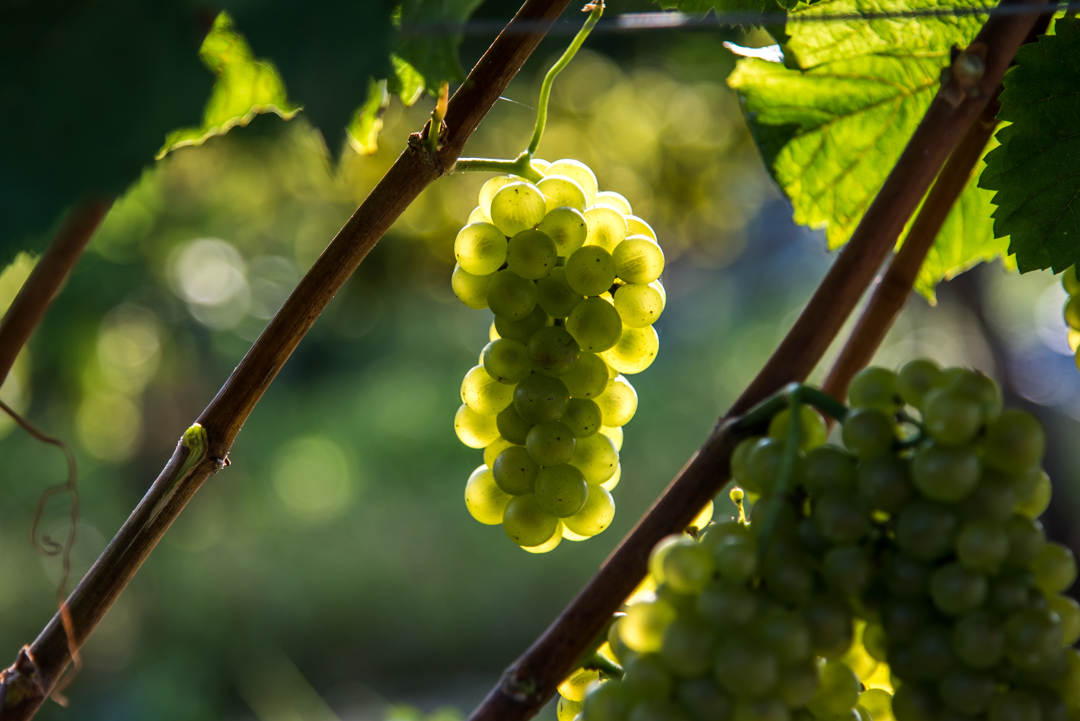




Comment here